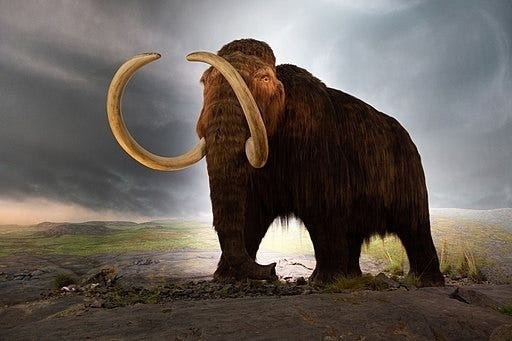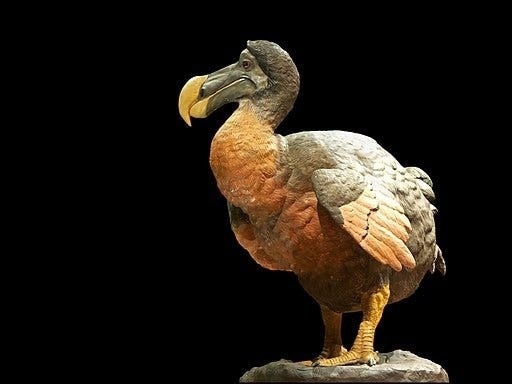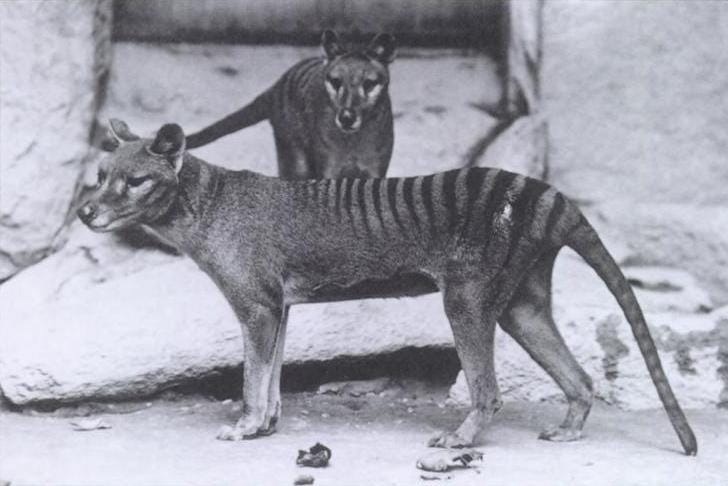In 2013, George Church declared that he wanted to bring back the wooly mammoth, leading some to think, “Why don’t we work on the environment now and save the species we have left?” Yet, this is not the point.
It has since become apparent that woolly mammoths are considered “engineers of the environment” and could boost the carbon storage capacity of the tundra and help slow climate change. Yet this is only part of the solution; there is still a lot more beneath the concept of de-extinction and what it would mean.
In this episode, Alexander Titus from Colossal Biosciences explains what it would take to de-extinct the mammoth as well as how to fund a project like this when the final product is not up for sale.

Thomas Quine, CC BY 2.0, via Wikimedia Commons.
Mammoths From Elephants
While some ancient mammoth DNA is available, it remains incomplete. Today, the mammoth’s closest living relative is the Asian elephant. Yet, it is not a matter of simply taking what DNA we have from the mammoth and injecting it into an elephant egg, hoping for some kind of hybrid to hatch.
This significant genome engineering project involves pinpointing the genes that give mammoths their distinctive traits, like their woolly coats and cold resilience. Then, the goal shifts to engineering these traits into elephants to recreate a mammoth.
How does that happen when there are so many technical challenges to consider? Can CRISPR technology be used to make hundreds of genome changes in just one cell? Not to mention the challenge of somatic nuclear transfer, etc.
Even if the results are successful and a mammoth is reproduced, what is the best environment for this species to thrive and grow the population in order to be able to reintroduce the species into the Arctic? Then, there are questions for science and society regarding how to accept and protect a species brought back using de-extinction techniques.
Bioinformatics, AI, and the Business Model
Determining which genetic variations to focus on and fully understanding the elephant genome, including regulatory sequences, amounts to a monumental bioinformatics project. This is where a business model comes into play.
While analogies to the space program are often overused, they are perfectly appropriate in this case. There are a number of technologies and capabilities that will need to be developed and refined along the way but they could also be commercialized to support the core mission. For instance, Colossal recently created the company Form Bio, based on their bioinformatics technology, which will also be of wider benefit to the cell and gene therapy industry.
There is also an AI component associated with this project, which aids in discerning all facets of the target environment for the species’ reintroduction. One approach involves listening and pinpointing specific sounds; however, this can be exceedingly time-consuming for a human operator.
My team in particular developed an interesting way to use machine learning, unsupervised, and actually read through and listen through audio. And instead of having a manual annotator, someone who goes through and listens to something and puts a little mark in their digital notebook, we can actually have an algorithm go through and say, “There is a point of interest.
Titus
Then, a human can go directly to the annotations and try to identify the source of those sounds in the environment. Given all the tech needed to make these projects happen, and the biology learned as a result, more spinoffs seem likely.

Image Credit: Life Science Marketing Radio
However, the mammoth is not the only animal on the bring-back list. Scientists at Colossal are also working on the dodo (not long extinct) and the Tasmanian tiger.

Image Credit: Life Science Marketing Radio
While numerous questions remain unanswered, this project undeniably stands as a bold endeavor fueled by the thrill of discovery.
About Life Science Marketing Radio
Life Science Marketing Radio is connecting life science professionals with the brightest minds and best thinking in the industry to grow their network and advance their careers.
Stay on top of new technologies around life science and embark on a journey to learn as much as possible on artificial intelligence, machine learning, and more.
Sponsored Content Policy: News-Medical.net publishes articles and related content that may be derived from sources where we have existing commercial relationships, provided such content adds value to the core editorial ethos of News-Medical.Net which is to educate and inform site visitors interested in medical research, science, medical devices and treatments.